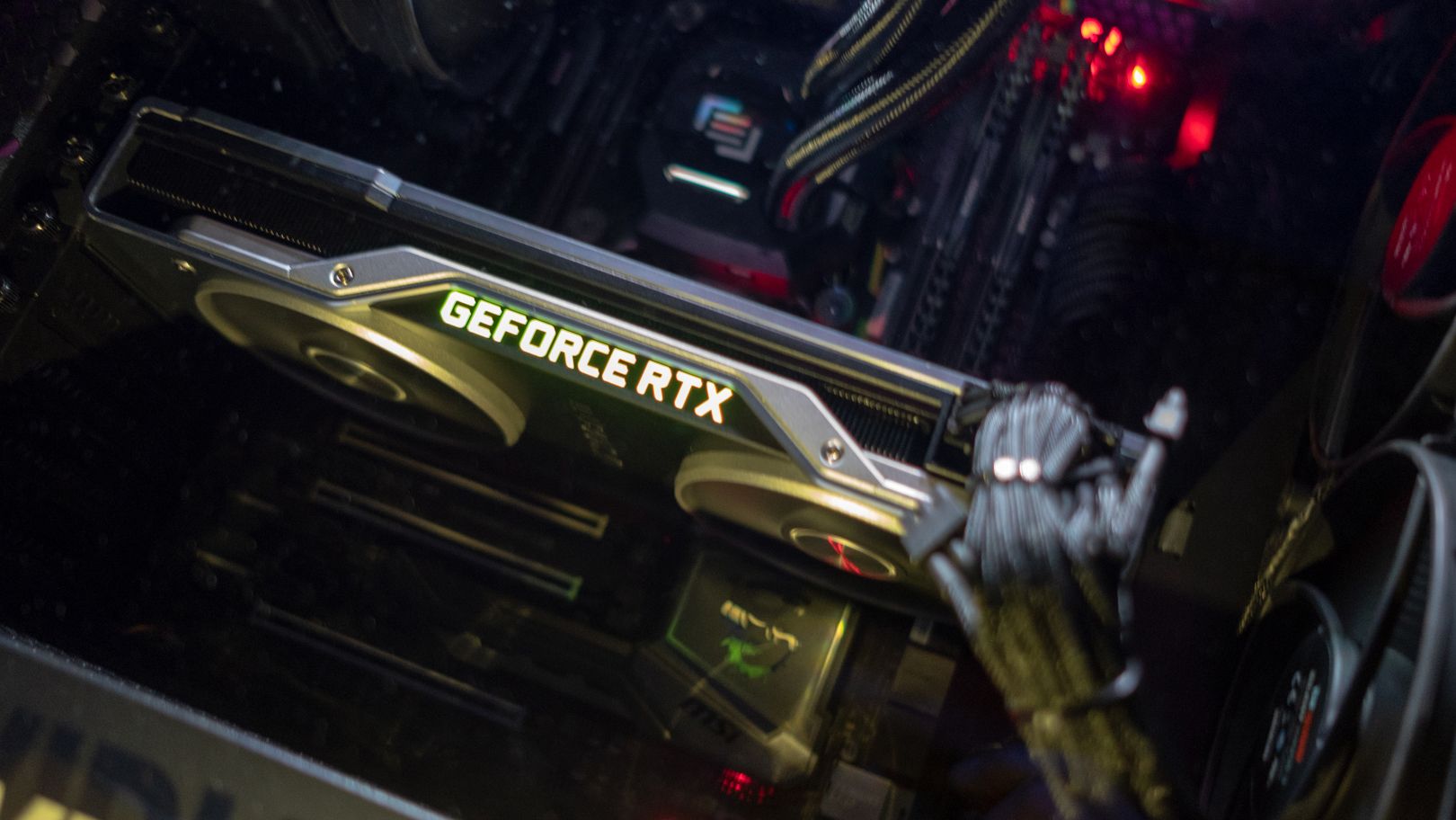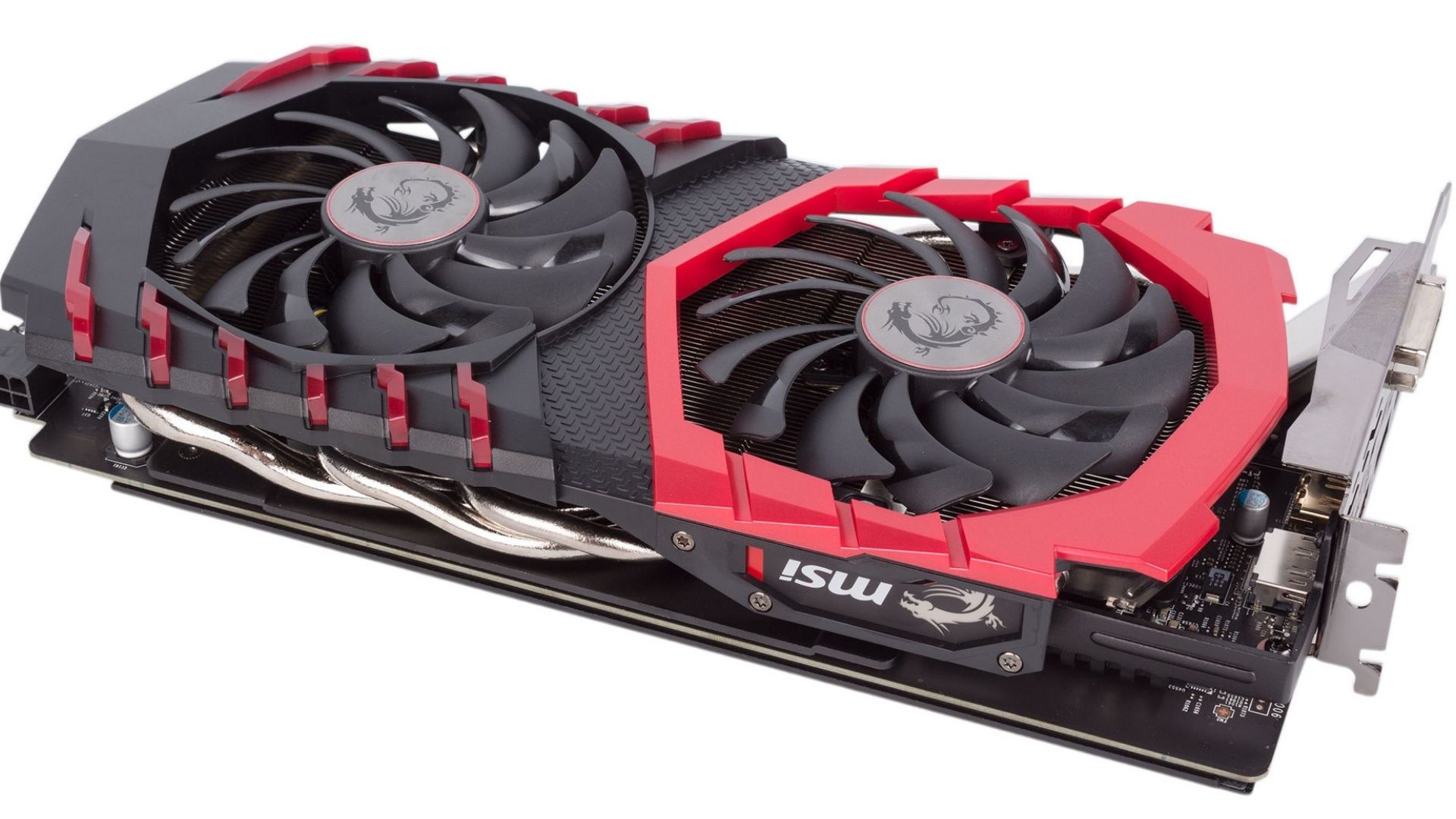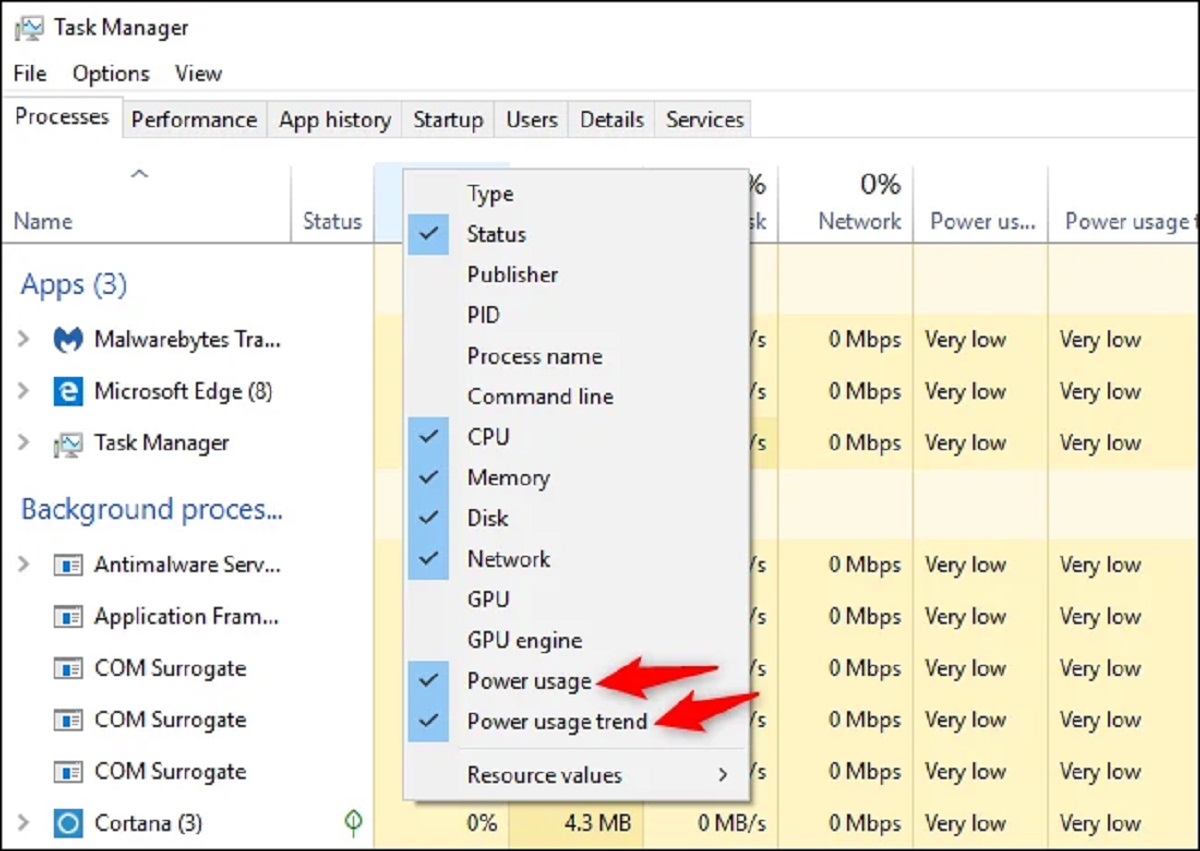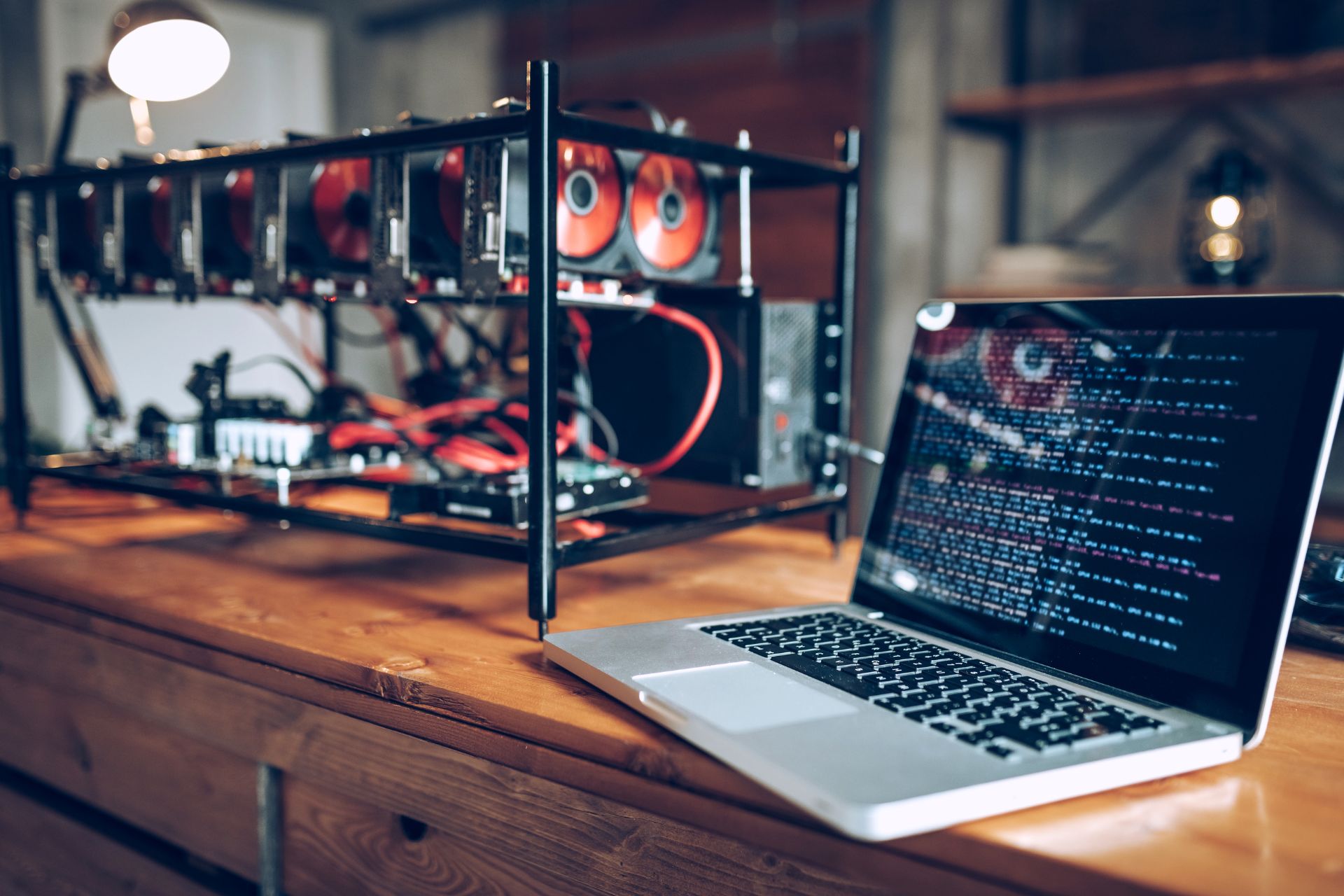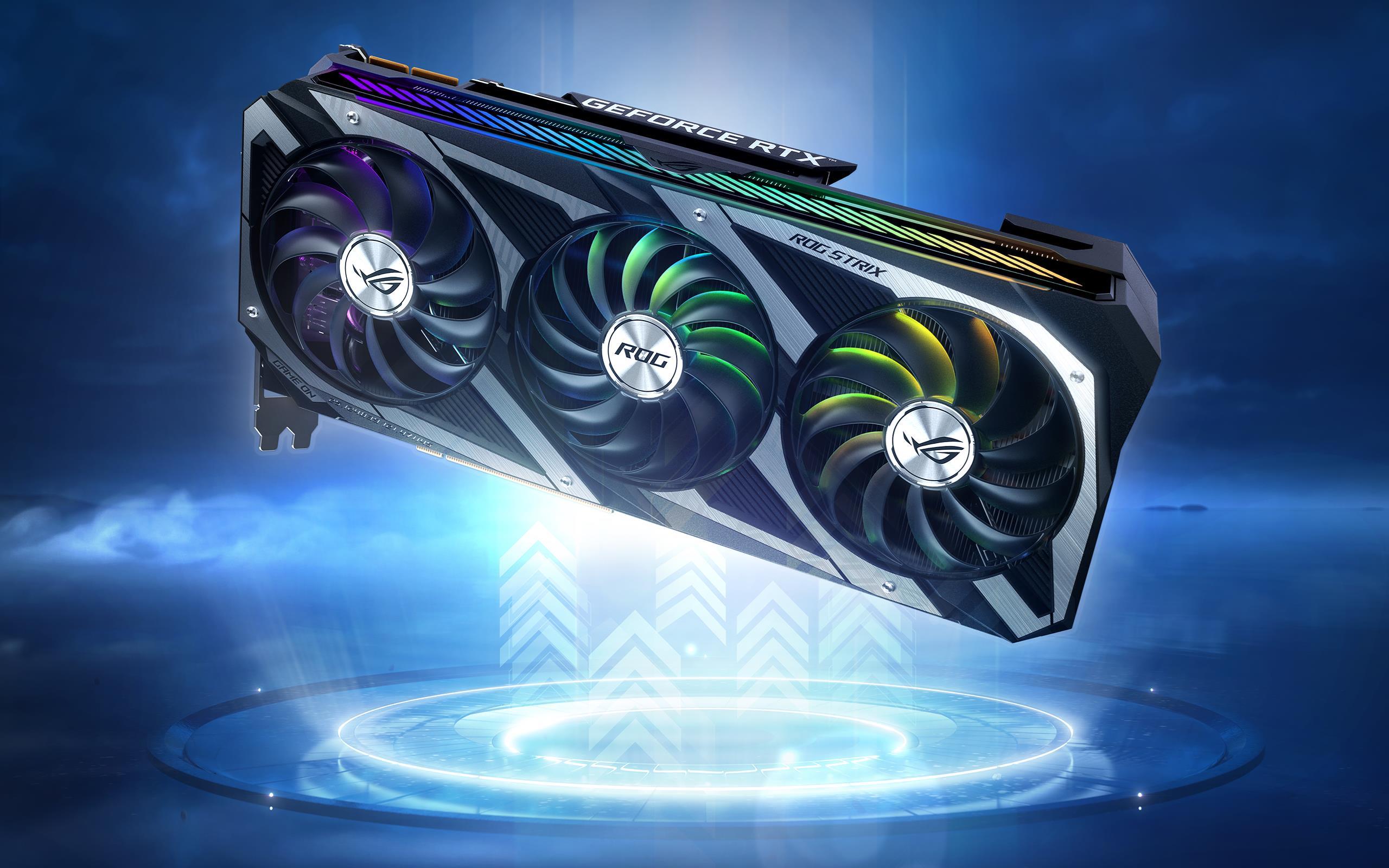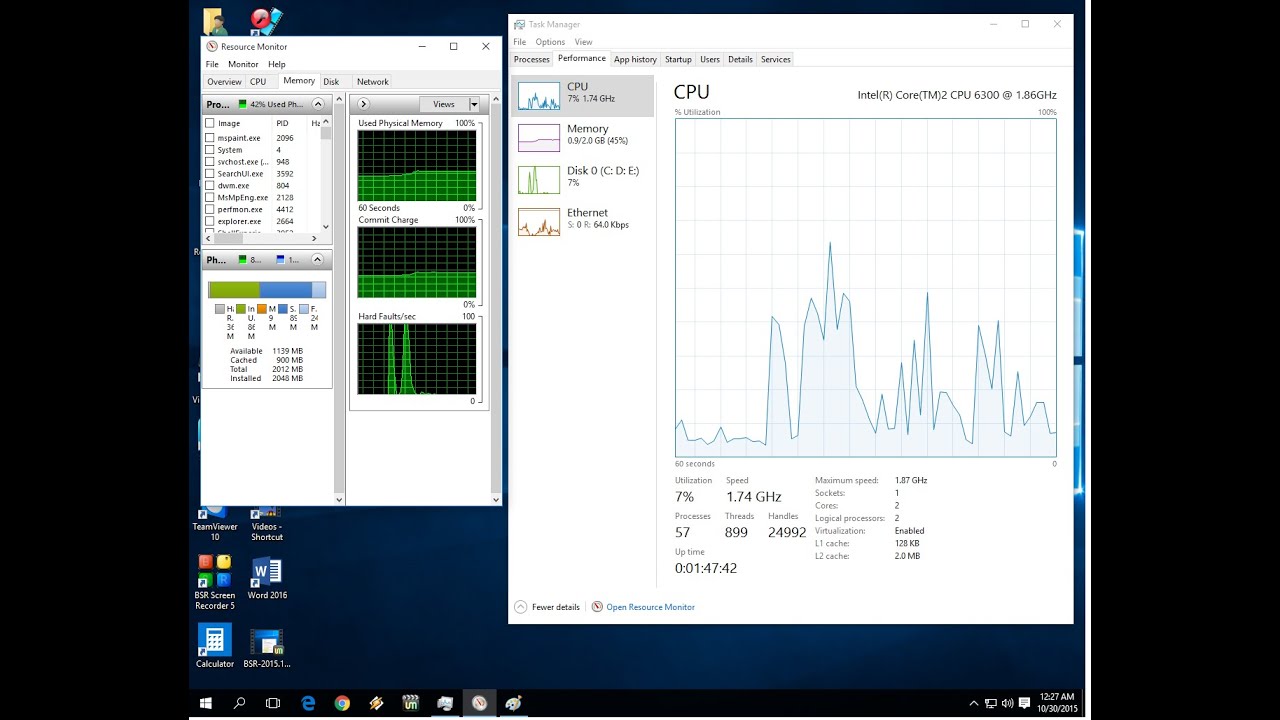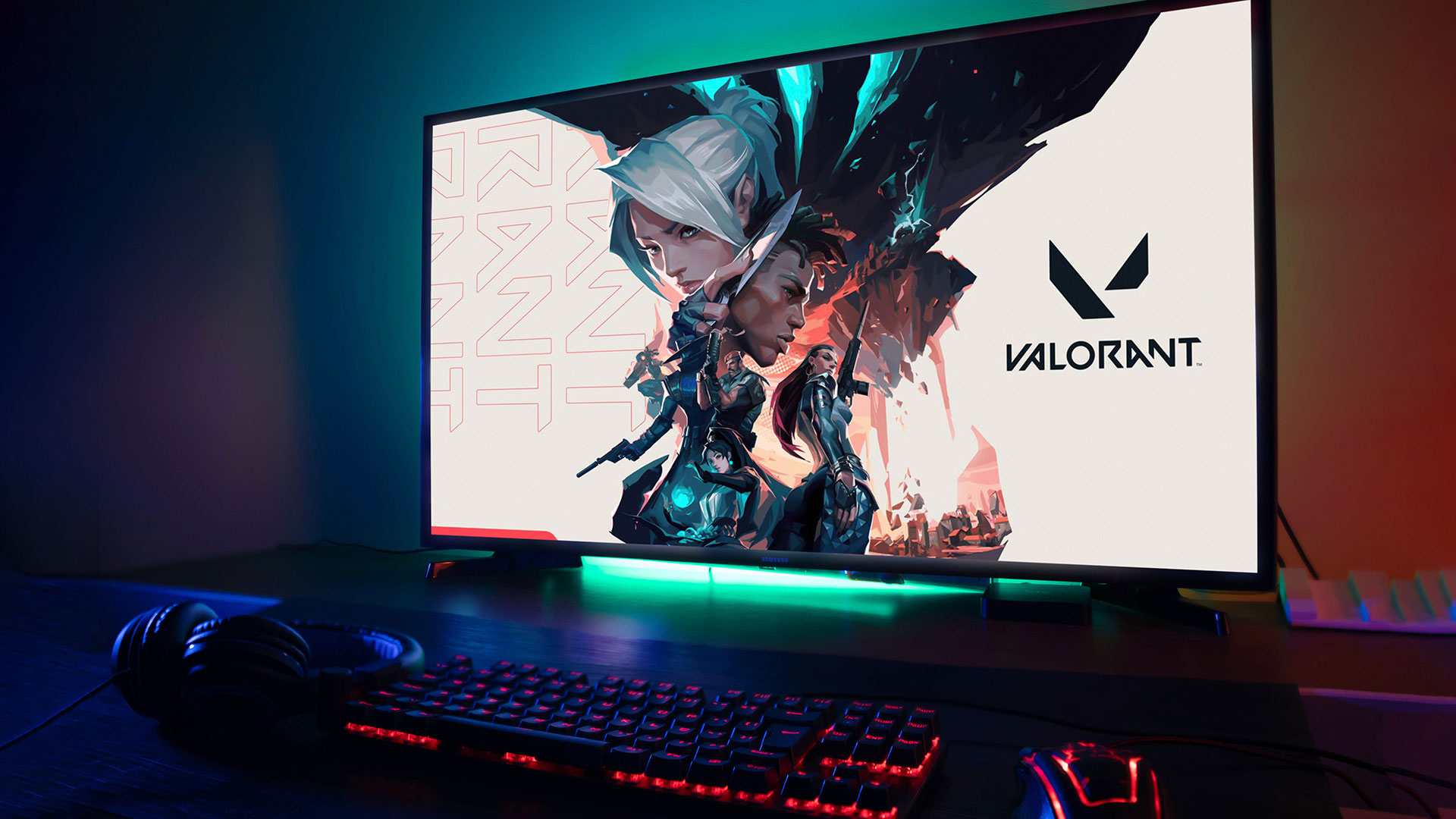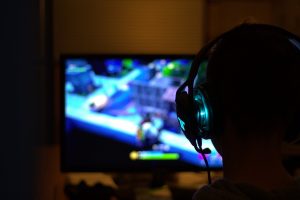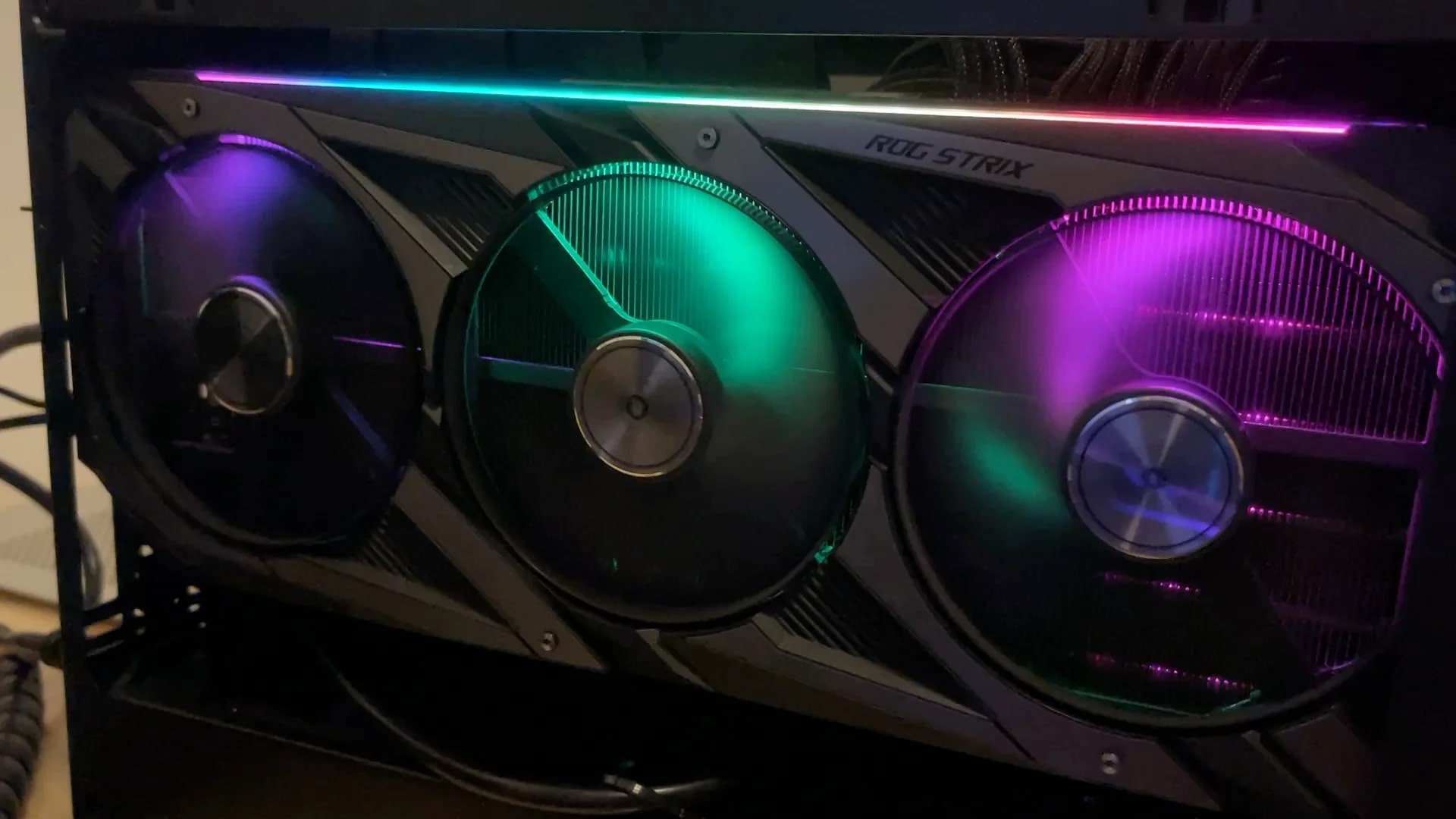Introduction
With the constant advancements in technology, particularly in the realm of graphics processing, GPUs (Graphics Processing Units) have become integral components of modern computing systems. GPUs are specifically designed to perform complex mathematical calculations required for rendering graphics, simulations, and other computationally intensive tasks. As users, it is crucial to have a clear understanding of GPU utilization and what is considered normal in order to optimize performance and troubleshoot any potential issues.
GPU utilization refers to the percentage of time the GPU is actively processing tasks compared to its maximum capacity. It provides valuable insights into how efficiently the GPU is being utilized during various computing tasks. Understanding normal GPU utilization levels can help users gauge system performance and identify any potential bottlenecks or inefficiencies.
Factors such as the complexity of the computational workload, the type of application being run, and hardware configuration can all impact GPU utilization. By monitoring and analyzing GPU utilization, users can optimize their systems, ensure the GPU is operating within expected parameters, and identify any potential performance issues.
This article will explore the concept of GPU utilization in detail, including the factors that affect it, the normal range of GPU utilization, common causes of low and high GPU utilization, and how GPU utilization varies across different applications. Additionally, we will discuss methods to monitor GPU utilization to aid in troubleshooting and optimizing system performance. Whether you are a gamer, a designer, or a professional utilizing GPU-intensive applications, understanding GPU utilization is crucial for achieving the best performance and efficiency.
What is GPU Utilization?
GPU utilization refers to the percentage of time the GPU is actively performing calculations or processing tasks compared to its maximum capacity. It is a metric that indicates how efficiently the GPU is being utilized during a specific operation or overall system usage. GPU utilization can be measured at different levels, such as per individual application or across the entire system.
When a GPU is idle or not actively processing any tasks, the utilization is at 0%. As workloads are assigned to the GPU, the utilization increases accordingly. When the GPU reaches its maximum capacity, the utilization rate reaches 100%. However, it is important to note that consistently operating at 100% utilization for extended periods may indicate an overload, potentially leading to performance issues, overheating, or even system crashes.
GPU utilization is influenced by several factors, including the complexity of the computational workload, the number and type of tasks being performed, the efficiency of the software being used, and the hardware configuration of the system. Tasks that require intensive graphical processing, such as gaming, 3D rendering, and video editing, typically result in higher GPU utilization.
Monitoring GPU utilization can provide valuable insights into system performance and help identify potential bottlenecks or issues. By analyzing GPU utilization, users can optimize their systems, ensuring that the GPU is operating within expected parameters. It can also help identify if the GPU is being underutilized, which may indicate a need for hardware or software upgrades to achieve better performance.
Understanding GPU utilization is important for both gaming enthusiasts and professionals working with GPU-intensive applications. It allows users to effectively manage and optimize their system resources, ensuring smooth and efficient performance for a variety of tasks.
Factors Affecting GPU Utilization
GPU utilization is influenced by several factors that can impact its overall efficiency and performance. Understanding these factors is key to optimizing GPU utilization and improving system performance. Let’s explore some of the main factors that affect GPU utilization:
- Workload Complexity: The complexity of the computational workload assigned to the GPU plays a significant role in its utilization. Graphics-intensive tasks, such as rendering high-resolution 3D graphics or running complex simulations, require more processing power and therefore result in higher GPU utilization.
- Number and Type of Tasks: The number and type of tasks running on the GPU can also impact its utilization. Running multiple applications simultaneously or executing parallel tasks that heavily rely on graphics processing can lead to increased GPU utilization. On the other hand, running simpler or lightweight tasks may result in lower GPU utilization.
- Software Efficiency: The efficiency of the software being used also affects GPU utilization. Well-optimized applications take advantage of the GPU’s capabilities, efficiently utilizing its processing power. Poorly optimized software, on the other hand, may not fully utilize the GPU, leading to lower overall utilization.
- Hardware Configuration: The hardware configuration of the system, including the GPU model, memory capacity, and bus width, can influence GPU utilization. GPUs with higher memory capacities and wider bus widths can handle more data, leading to increased utilization for memory-intensive tasks.
- Power and Thermal Limits: GPUs often have power and thermal limits set to prevent overheating and ensure system stability. In some cases, these limits can restrict GPU utilization. If the GPU reaches its power or thermal limit, it may dynamically reduce its clock speed or performance to prevent exceeding these limits.
By considering these factors, users can optimize GPU utilization and ensure that the GPU is performing at its maximum potential. Monitoring GPU utilization and understanding how these factors affect it can help in identifying potential performance bottlenecks and making informed decisions regarding system upgrades or software optimization.
Normal GPU Utilization Range
The normal GPU utilization range can vary depending on the specific workload, applications being run, and hardware configuration. However, there are some general guidelines to help users understand what is considered normal GPU utilization.
During idle or non-intensive tasks, it is common for GPU utilization to be low, typically below 10%. This indicates that the GPU is not actively processing any significant workload. In this state, the GPU is in a power-saving mode, conserving energy and operating at a lower clock speed.
During typical usage scenarios, such as web browsing, document editing, or basic multimedia playback, GPU utilization may range from 10% to 30%. These activities do not require heavy graphics processing, so the GPU is not heavily utilized.
When running more graphics-intensive applications, such as video editing or 3D rendering, GPU utilization can increase to around 50% to 80%. These tasks require more computational power, resulting in higher GPU utilization to handle the complex calculations and rendering processes.
During gaming, GPU utilization can vary greatly depending on the specific game and its graphic demands. In general, GPU utilization in gaming can range from 60% to 100%, with more demanding games pushing the GPU towards higher utilization levels. It is important to note that GPU utilization in gaming can fluctuate based on the complexity of the scene being rendered, the game’s optimization, and other factors.
When it comes to GPU utilization, it is crucial to consider the overall system performance rather than solely focusing on the utilization percentage. If the GPU is consistently under high utilization but the system is performing well, there is no need for concern. Conversely, if the GPU utilization is abnormally low and the system is experiencing performance issues, it may indicate a bottleneck or inefficiency.
It is worth mentioning that these are general guidelines, and actual GPU utilization can vary based on individual hardware configurations, software optimizations, and specific workloads. Monitoring GPU utilization over time under different scenarios can provide users with a better understanding of the normal range for their specific system.
Low GPU Utilization Causes
Low GPU utilization occurs when the GPU is not being fully utilized, despite the presence of tasks that could potentially require its processing power. Understanding the causes of low GPU utilization is important for optimizing system performance. Here are some common reasons why GPU utilization may be low:
- Inefficient Software: Poorly optimized applications or drivers can hinder GPU utilization. If the software does not efficiently utilize the GPU’s capabilities, it may result in low utilization. This can be addressed by updating drivers, ensuring software compatibility, and optimizing application settings.
- CPU Bottleneck: If the CPU is unable to feed enough data to the GPU due to its limited processing capabilities, it can lead to low GPU utilization. This can happen when the CPU becomes a bottleneck, preventing the GPU from fully utilizing its processing power. Upgrading to a faster CPU or optimizing CPU-bound processes can help alleviate this issue.
- Low Graphics Demands: Certain tasks or applications may not require significant graphics processing, resulting in low GPU utilization. Performances such as document editing or web browsing typically do not put much strain on the GPU and may not require high utilization. This is normal for such activities and does not indicate an issue.
- Power and Thermal Constraints: Many GPUs have power and thermal limits to prevent overheating. If the GPU reaches these limits, it may throttle its performance and reduce utilization to avoid exceeding these constraints. Ensuring proper cooling and power supply, as well as managing system power settings, can help avoid this limitation.
- Background Processes: Certain background processes, such as antivirus scans or system updates, can divert system resources and potentially limit GPU utilization. By prioritizing GPU-bound tasks and managing background processes, users can help ensure better GPU utilization during critical operations.
It is important to note that low GPU utilization is not always a cause for concern. If the system is performing well without any noticeable issues or performance degradation, low GPU utilization may simply indicate that the workload does not require intense graphics processing. However, if low GPU utilization is accompanied by performance problems or subpar graphics quality, it is worth investigating and addressing any underlying issues.
By identifying and addressing the causes of low GPU utilization, users can optimize system performance and ensure that the GPU is being fully utilized during demanding tasks, resulting in improved graphics quality and overall system efficiency.
High GPU Utilization Causes
High GPU utilization occurs when the GPU is consistently operating at or near its maximum capacity. While high GPU utilization is not necessarily a cause for concern, it can indicate certain factors that may affect system performance. Let’s explore some common causes of high GPU utilization:
- Graphics-Intensive Workloads: Tasks that require extensive graphics processing, such as gaming, 3D rendering, video editing, or running complex simulations, can result in high GPU utilization. These workloads push the GPU to its limits, utilizing its processing power to deliver optimal performance.
- Misconfigured or Interface-limited Applications: Some applications may be misconfigured or limited by the available interface, resulting in high GPU utilization. This can be due to settings that force the GPU to always operate at maximum performance, regardless of the workload’s demand. Adjusting application settings or updating the interface can help optimize GPU utilization.
- Insufficient Graphics Memory: If the GPU does not have sufficient memory to handle the workload, it can result in high GPU utilization. In such cases, the GPU needs to constantly swap data between the limited memory and system memory, leading to increased utilization. Adding more graphics memory or reducing the workload can help alleviate this issue.
- Overclocking: Overclocking the GPU past its intended limits can lead to high GPU utilization. While overclocking can provide performance gains, it can also increase power consumption and generate more heat. If the GPU operates near its maximum capacity due to overclocking, it may result in stability issues or higher chances of overheating. Ensuring proper cooling and reverting to default clock speeds can help alleviate this problem.
- Background Processes: Certain background processes that utilize the GPU, such as video encoding or cryptocurrency mining, can result in high GPU utilization. These processes may run concurrently with other tasks and use the GPU’s resources extensively. Managing and prioritizing these background processes can help achieve a better balance of GPU utilization for different tasks.
It is important to monitor high GPU utilization to ensure that the system remains stable and does not overheat. If high GPU utilization leads to performance issues or overheating, it may be necessary to optimize application settings, upgrade hardware components, or adjust system configurations to achieve a better balance of resources.
However, it is worth noting that high GPU utilization during graphics-intensive tasks is typically expected and desired. As long as the system remains stable, temperatures are within safe limits, and there are no significant performance issues, high GPU utilization is often an indication that the GPU is being used efficiently to its full potential.
Understanding the causes of high GPU utilization can help users optimize system performance and ensure that the GPU’s resources are effectively utilized for demanding tasks, resulting in improved graphics quality and overall system responsiveness.
GPU Utilization in Different Applications
GPU utilization can vary significantly across different applications and usage scenarios. Some applications heavily rely on graphics processing and can result in high GPU utilization, while others may have minimal graphics demands, leading to lower GPU utilization. Let’s explore how GPU utilization can differ in various applications:
- Gaming: Gaming is one of the most GPU-intensive tasks. The GPU is responsible for rendering complex 3D graphics, applying visual effects, and processing real-time physics simulations. As a result, gaming can push the GPU to its maximum capacity, leading to high GPU utilization, especially in graphically-demanding games.
- Video Editing and Rendering: Video editing and rendering applications, such as Adobe Premiere Pro or DaVinci Resolve, heavily rely on GPU processing. These tasks involve manipulating and processing large video files, applying effects, and exporting the final output. As a result, GPU utilization during video editing can be high, especially when applying effects or rendering complex scenes.
- 3D Rendering and Visualization: 3D rendering and visualization software, such as Autodesk Maya or Blender, utilize the GPU extensively for creating and rendering intricate 3D models and scenes. Complex lighting, shading, and texturing calculations require significant GPU processing power, resulting in high GPU utilization during rendering.
- Machine Learning and AI: GPU acceleration is widely used in machine learning and AI applications, such as training neural networks. The parallel processing capabilities of GPUs make them well-suited for handling the immense computational requirements of these tasks. Consequently, GPU utilization in machine learning and AI workloads can be high.
- Web Browsers and Office Applications: Web browsers and office applications, such as Google Chrome or Microsoft Office, generally have lower GPU utilization. These applications focus more on displaying static content and do not require intense graphics processing. Although GPU utilization may be low, modern web browsers and software are leveraging GPU acceleration for improved performance and smoother UI animations.
It is important to note that GPU utilization in different applications can also depend on factors such as software optimizations, hardware configuration, and specific workload requirements. Some applications may have settings that allow users to adjust GPU utilization or choose between different levels of performance and power consumption.
Understanding GPU utilization in different applications can help users optimize their systems and ensure that the GPU is effectively utilized for specific tasks. By monitoring GPU utilization during different application usage scenarios, users can identify any performance bottlenecks, optimize software settings, and potentially make data-driven decisions regarding hardware upgrades to achieve better performance and efficiency for their specific workload requirements.
How to Monitor GPU Utilization
Monitoring GPU utilization is crucial for optimizing system performance, identifying potential bottlenecks, and ensuring that the GPU is operating within expected parameters. There are several methods and tools available to monitor GPU utilization effectively. Here are some common approaches:
- Windows Task Manager: On Windows systems, the built-in Task Manager provides a basic overview of GPU utilization. To access it, right-click on the taskbar and select “Task Manager.” Under the “Performance” tab, click on “GPU” to view GPU utilization details.
- Third-Party Monitoring Software: Various third-party monitoring software, such as MSI Afterburner, GPU-Z, or HWMonitor, offer comprehensive GPU monitoring capabilities. These tools provide detailed information on GPU utilization, temperature, clock speeds, and other performance metrics.
- Vendor-Specific Utilities: GPU manufacturers often provide their own software utilities for monitoring and managing GPU performance. For example, NVIDIA provides the NVIDIA Control Panel and GeForce Experience, which offer GPU monitoring and optimization options.
- Application-Specific Tools: Some specific applications, especially in the gaming realm, provide built-in performance monitoring tools. For instance, Steam’s built-in overlay and AMD’s Radeon Overlay allow users to monitor GPU utilization and other performance metrics.
- APIs and SDKs: Developers and advanced users can utilize graphics APIs (such as DirectX or OpenGL) or software development kits (such as NVIDIA CUDA or AMD APP SDK) to access GPU utilization information programmatically and create custom monitoring solutions.
When monitoring GPU utilization, it is essential to observe not only the overall utilization percentage but also the specific utilization of each GPU component, such as memory usage, core usage, and temperature. This can help identify any specific areas of concern or potential performance bottlenecks.
In addition to monitoring tools, it is important to consider real-time performance monitoring during actual usage scenarios. Monitoring GPU utilization while running resource-intensive applications, performing gaming sessions, or rendering complex projects can provide a more accurate assessment of how the GPU is utilized under different workloads.
By regularly monitoring GPU utilization, users can ensure that the GPU is operating optimally and make informed decisions regarding system optimization, software settings, or hardware upgrades to achieve better performance and efficiency.
Conclusion
Understanding GPU utilization is essential for optimizing system performance and ensuring efficient usage of graphics processing capabilities. From gaming to video editing and machine learning, GPU utilization can vary greatly depending on the specific workload and application being used.
Throughout this article, we have explored various aspects of GPU utilization, including what it means, the factors that influence it, the normal utilization range, and common causes of both low and high utilization. We have also discussed how GPU utilization can differ across different applications and provided insights into monitoring GPU utilization effectively.
Optimizing GPU utilization involves considering factors such as workload complexity, software efficiency, hardware configuration, and power and thermal constraints. By taking these factors into account, users can ensure that their GPU is operating within expected parameters and make informed decisions regarding system upgrades or software optimizations.
Whether you are a gamer, a designer, or a professional working with GPU-intensive applications, monitoring and understanding GPU utilization can help you achieve the best performance and efficiency. It allows you to identify potential performance bottlenecks, optimize software settings, and potentially make hardware upgrades to ensure smooth and reliable operation.
Remember that GPU utilization is just one aspect of system performance. It is important to consider overall system performance, including CPU utilization, memory usage, and storage capabilities, to achieve a well-balanced and optimized computing experience.
By keeping a close eye on GPU utilization and taking steps to optimize it, users can unlock the full potential of their GPUs, ensuring better graphics quality, faster rendering times, and improved overall system responsiveness.







